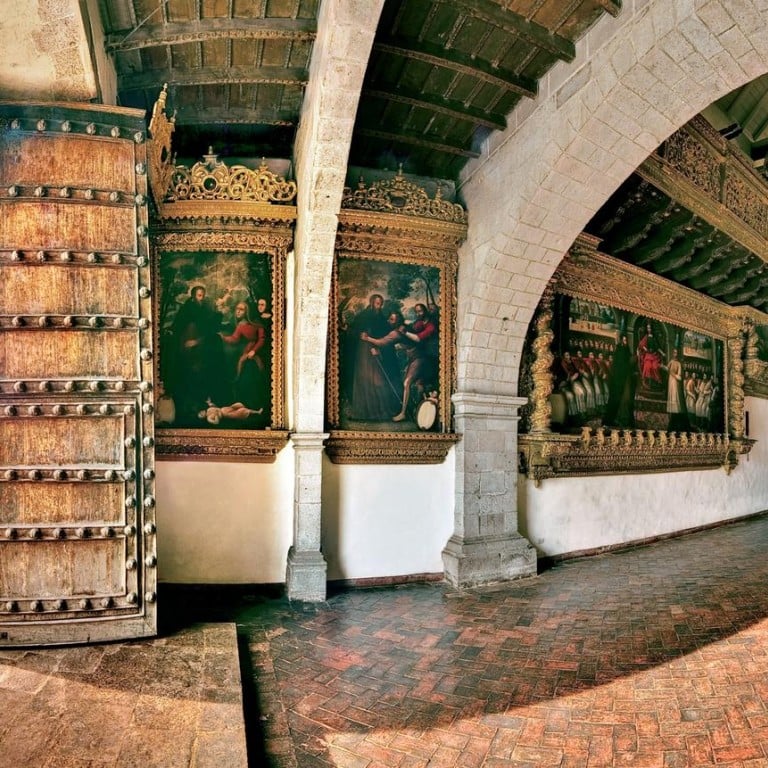Monastery hotels just might provide the holy grail

From Puerto Rico and Peru to France, Turkey and Italy, restored monastery hotels are attracting design-loving travellers who are happy to splash out
Steeped in history, with spacious grounds and courtyards, peaceful gardens and mysterious atmospheric chambers, restored monasteries make surprisingly stunning luxury hotels.
"Convents and monasteries can be an immediate success, because they serve as destinations in themselves," says Efrain Rosa, general manager of Hotel El Convento in San Juan, Puerto Rico. "Their unique structure, architecture, interior design and the intriguing history lying between their walls make them national historic sites and landmarks. Their boutique appearance also gives the impression of a self-contained, intimate environment with Old World luxury and personal service."
Located in a 361-year-old former Carmelite convent within the historic Old San Juan section, El Convento began operation as a hotel in 1962 under the ownership of Frederic Woolworth, heir to America's pioneer department store Woolworth, but it has since changed hands several times.
During its heyday, the hotel attracted Rita Hayworth, Ethel Merman, George Hamilton, Lynda Bird Johnson and Pablo Casals, whose cello playing in the courtyard could be heard throughout the property. To differentiate Hotel El Convento from the new glitzy hotels that line the neighbouring fashionable Condado strip in San Juan, the hotel's Spanish interior designer Jorge Roselló retained the original convent-style characteristics - narrow dark hallways, arched corridors and high ceilings on the first two floors of the property. Also in its original condition is a rectangular interior courtyard where the convent's chapel and a giant 300-year-old níspero fruit tree can be found.
A third, fourth and fifth floor with wider, brighter hallways and lower ceilings were added to the original structure. An outdoor terrace was incorporated into the third floor, a plunge pool and jacuzzi to the fourth floor, and the courtyard was weatherproofed with a canopy, so guests can still dine outdoors when it rains.
While a modern annex works in a hip and vibrant destination such as San Juan, purists, such as celebrity chef Alain Ducasse, focus on bringing the pomp and splendour of French history back to life at Hostellerie de l'Abbaye de la Celle, part of a 12th-century Benedictine Roman abbey tucked away in a serene valley in the Var region of France.
Tancrède Barale, the hotel's director, says: "The aim was to restore the Hostellerie to its original personality and true identity, with that certain additional soulfulness that defines strong and distinct places." This was achieved with the help of distinguished French talent, such as architect Robert Michel who, with a team of local craftsmen, restored the building to its 18th-century Provençale panache. Interior designer Tonia Peyrot worked towards creating a feminine atmosphere of lightness and refinement, and landscape artist Francesco Flavigny laboured to preserve the bicentenary flora of the three-hectare property.
Also paying great attention to historical detail is Hotel Monasterio by Orient-Express in Cuzco, Peru. Built in 1595, Hotel Monasterio is situated where an Inca palace once stood. Three years later, this palace was conquered by the Spanish who turned it into the Seminary of San Antonio Abad, for the education of Catholic priests. The building is a fine example of the grandeur of colonial Renaissance architecture with stones around its entrance that still bear the Spanish Arms Escutcheon, a 300-year old cedar tree in a cloistered courtyard, and a chapel and guest rooms decorated in baroque fashion with magnificent antique paintings of saints in ornate gilded frames.
"Its distinct feel and character appeals to the kind of traveller with a contemplative nature," says Gustavo de Leon, Hotel Monasterio's general manager. "Orient-Express' intention to recreate the majesty of the Seminary of San Antonio Abad involved faithfully restoring as much as we possibly could. Monasteries and convents have a lot of history and therefore naturally add a lot of character to a hotel, creating an experience that is authentic to its location."
In Cappadocia, Turkey, it is the legendary cave dwellings that best capture the region's architectural character, and the rustic and earthy design approach of Argos is indeed fitting for its locale. Situated in the village of Uchisar in the ruins of an ancient subterranean monastery complex named Bezirhane, Argos is housed in a 2,000-year-old underground cave system that once served as accommodation for camel caravans on the Silk Road.
After 15 years of careful restoration under the direction of Turkey's leading architect, Turgut Cansever, the result is a cosy and romantic hobbit-like sanctuary of traditional tufa-stone, with Turkish carpets and artefacts, candles, a fireplace, and touches of modernity such as wireless internet, in-room sound systems and private in-suite pools.